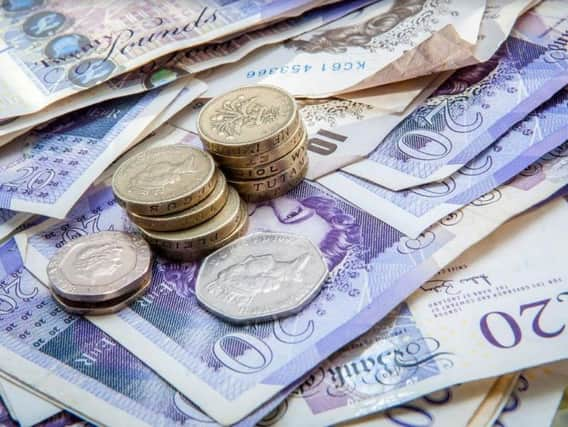Gareth Shaw: Reaping simple dividends from shares


Then-Chancellor George Osborne announced an overhaul of the dividend income tax regime, replacing one of the most unnecessarily complicated and arcane ways of raising revenue with something much simpler, if potentially a little less generous.
A quick recap. Dividends are the share of the profits companies pay out to its part-owners, and can help investors build a healthy, regular income from their portfolios.
Advertisement
Hide AdAdvertisement
Hide AdBut for almost 20 years, investors had to bend their minds around a complex web of tax rates when they declared their dividend income on their annual tax returns.
Basic-rate taxpayers faced a 10% tax on dividends. However, given that the companies in which they held shares had already paid corporation tax on their profits, a 10% dividend tax credit was applied, meaning that no additional tax was due.
You were taxed, but then you weren’t taxed, because the company had paid tax and oh dear, I’ve gone cross-eyed…
Still with me?
Dividend income tax was ripe for simplification, and simplified it was.
Advertisement
Hide AdAdvertisement
Hide AdFrom April 2016, a new tax-free allowance would be introduced, giving shareholders and company directors the opportunity to earn £5,000 in dividends before any tax was due.
Tax rates increased to 7.5% for basic-rate taxpayers, 32.5% for higher-rate and 38.1% for additional-rate taxpayers.
But at the time, you’d have to be earning a hefty chunk in dividends to face a tax increase.
Under the new system, higher-rate taxpayers would be better off until they received dividends exceeding £21,667.
Advertisement
Hide AdAdvertisement
Hide AdOnly those with substantial shareholdings would be worse off as a result – a basic-rate taxpayer seeing a dividend yield of 3.71%.
Of course, any generous tax-free allowance can be pecked at by the money men in the government.
Last week in his first Budget, Chancellor Philip Hammond announced that the shiny new dividend allowance is to be cut to £2,000, starting in April 2018.
With the FTSE All-Share currently yielding around 3.49%, a basic-rate taxpayer needs around £57,000 in shares to start paying dividend tax. That leaves many more private investors now paying tax.
Advertisement
Hide AdAdvertisement
Hide AdSo, what can you do to reduce the likelihood of a big tax bill in a couple of years’ time? I’ve got four dividend tax hacks for you:
First, if you’ve not already used your allowance, get your investments into an Isa.
That lovely tax-free bubble shelters you from dividend, income and capital gains tax.
You’ve got a couple of weeks to fill up your £15,240 allowance from this tax, then you can pop a bumper £20,000 in from April onwards.
Advertisement
Hide AdAdvertisement
Hide AdThe process of transferring investments into an Isa is called a ‘bed and Isa’.
You’ll need to sell your investments, transfer the cash to a stocks and shares Isa, and then buy the shares back.
There’s a risk that share prices will rise before you can re-purchase your investments, and you’ll also incur dealing charges.
Also, if you’ve held the shares for a long time, capital gains tax may be due on the profits you realise, so you may need to do your sums to plan a bed and Isa cost-effectively.
Advertisement
Hide AdAdvertisement
Hide AdSecond, if you’ve already used your Isa allowance, another way to protect your dividend returns is to transfer them to a self-invested personal pension (Sipp).
As with bed and Isas, you’ll need to sell the shares and buy them back inside your tax-free pension.
Third, don’t forget your husband, wife or civil partner. Shares can be freely transferred between married couples and civil partners.
If one of you exceeds the dividend income allowance and the other doesn’t, you can reduce the tax you pay as a couple by gifting your shares to your partner.
Advertisement
Hide AdAdvertisement
Hide AdAnd finally, get smart with your tax planning. Your personal allowance – the amount you can earn before you pay income tax – can be used up with dividend income.
From April 2017, you can earn £11,500 tax free (and perhaps more when the dividend allowance reduces in 2018) meaning you could earn at least £13,500 in dividends before you pay tax.
This may not be the tax increase that once made us jump for joy, but becoming fleet of foot with your tax planning can help you leap over the new dividend hurdles coming your way.